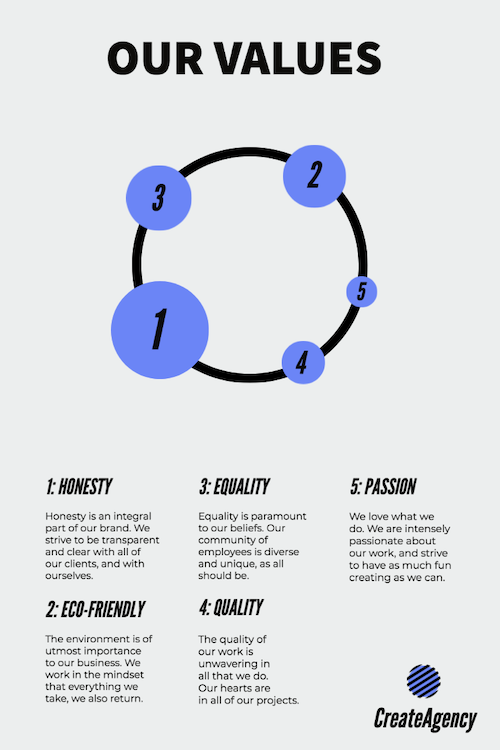How To Integrate Social Entrepreneurship Into Your Business

If you’re passionate about social innovation or social change, it’s an exciting time to be a consumer and a company.
More than ever, customers have concerns about sustainability, international development, and social justice. They also have an awareness of company practices, values, and actions, and are putting their money where their beliefs are.
Simultaneously, companies are creating groundbreaking initiatives for positive social impact by integrating social missions into their business models and day-to-day operations. No longer BTWs or nice-to-haves, these social change efforts are becoming integral parts of innovators’ contemporary business models. So much so that there’s a name for that! Operating a business with innovative solutions in the forefront is called “social entrepreneurship,” and it’s the best way to run a company while positively impacting the world around you.
Perhaps you’re thinking of starting a business that focuses on bringing fresh produce to low-income communities, combating climate change, or supporting local communities, habitat preservation, or fair trade. Or maybe you want to integrate solutions to social problems or environmental problems into your existing business plan.
Whatever your motivation, there are ways you can continuously give back, affect positive change, and make a buck. Read on for everything you need to know to join the growing group of successful social entrepreneurs impacting our lives for the better.
What Is Social Entrepreneurship?
Social entrepreneurship is the act of creating, funding, and implementing solutions to environmental, cultural, or social issues.
It can be championed by individuals, groups, startup businesses, nonprofit organizations, or for-profit businesses. It can also be wildly profitable or barely breaking even. The only common thread is a social business model, also known as a social enterprise or hybrid business model, which uses business solutions to make a positive impact on society or the environment.
Why Being a Social Entrepreneur Is Important

What’s the importance of being a social entrepreneur? Let’s start with the obvious. It’s the right thing to do. Whether you’re a new business or an established traditional business, there’s no escaping the need for companies that do more good than harm as they make and sell products or services. Besides, if you can build and run a successful business and help others, the planet, or both, why wouldn’t you?
There are good business reasons too. A recent study showed that 71% of millennials will pay more for a product that aligns with their values.
As consumers and investors continue to turn their dollars toward changemakers who value a positive social impact as much as a profitable bottom line, businesses need to follow suit to stay relevant and foster approval and loyalty.
If you think it sounds hard to do good and be good, consider a few of the many successful brands that are already slaying it:
- Patagonia, who started eco-conscious initiatives in the 1980s and focuses on environmental and socially responsible product production, has a $20 million-plus mission venture fund. It underwrites and secures partial ownership in companies invested in using business to tackle major environmental problems.
- Along with its mission to “create a more healthy, sustainable, and equitable world for the generations to come,” Seventh Generation has a foundation that makes grants to “non-profit 501(c)(3) organizations that promote and improve environmental conservation, the sustainable use of natural resources, and human health and social welfare.”
- Boutique brand Java Mountain Coffee contributes greater economic opportunities to indigenous rural women through sustainable sourcing partnerships in low-income coffee-growing areas of Indonesia. They also produce biodegradable coffee capsules that are compatible with coffee machines by Nespresso, Dolce Gusto, Lavazza, and Caffitaly. (We’ll drink to that!)
- The shoe company TOMS built their business around a promise to donate one pair of shoes for every pair sold. They went on to expand their One for One® campaign to support water, birth, sight, and anti-bullying initiatives.
4 Steps To Creating a Social Purpose for Your Brand

So how do you integrate some actionable goodness into your brand? There are two ways to approach creating a social purpose for your brand:
- Build your brand around a social mission.
- Add social initiatives to your existing brand. Take the do-no-harm approach by offsetting any negative environmental impacts through corporate social responsibility initiatives.
Both of these approaches can be earnest, influential, and impactful if done thoughtfully.
Regardless of your approach, use the following guidelines to formulate your social purpose:
Step 1: Choose a Social Issue or Need
Decide upon a relevant need or issue that connects to your brand’s products, customers, or history.
TOMS identified a need for its product, so it chose to provide shoes to those who needed them.
Patagonia knocks it out of the park by connecting to its customers. The company knows its consumers are travelers and nature lovers, so it fosters initiatives that address the environment.
Seventh Generation taps into its company history. It began after acquiring a mail-order catalog business that specialized in energy-, water-, and resource-saving products and continues to evolve the company’s original values.
If you need some ideas to get you started, consider these:
- Produce environmentally friendly products.
- Serve an underserved community.
- Distribute jobs and profit to communities in the developing world.
- Focus on philanthropic activities.
- Develop technology that supports sustainability, education, or nutrition.
- Preserve important limited natural resources through your practices, inventions, and investments.
Step 2: Create a Social Purpose Statement
Stonyfield Farm may sell dairy products, but their mission statement—“We’re committed to healthy food, healthy people, a healthy planet, and healthy business”—is a social purpose statement.
A clear statement declaring your social purpose is a moral compass for your business. It can serve as a gut-check to help you stay true to your vision when considering business and social initiatives. Also, in step 4, we’ll talk about how to use your statement in external communications about your brand.
Step 3: Design Initiatives That Support Your Statement
Once you have your purpose statement, it’s time to craft plans that will help you carry it out. Remember TOMS and the One for One® campaign? Since their 2006 inception, they’ve given more than 100 million pairs of shoes to people in need. Who doesn’t want to help people in need simply by buying a pair of shoes?
While TOMS is obviously very large scale, smaller-scale gestures count too. You can give back to your community by sourcing locally, fostering education through on-the-job training, or providing co-op workspace or other support for upcoming socially conscious businesses. You can also donate a percentage of your proceeds to an initiative that’s in line with your social values. Whatever your direction, make sure to integrate it into your marketing plan.
Business practices are also an area for significant impact, especially if your business or product is not anchored in a social initiative. Review your business practices and see where you can go green or offset negative impacts. This may mean adopting zero-carbon practices, paperless activities, or energy-saving initiatives. It can also include volunteering in the community or using bicycles for local deliveries instead of a car.
Step 4: Include Your Social Purpose in Your Brand Narrative

To establish yourself as a social entrepreneur, you need to weave your efforts into your brand story, or brand narrative, in a way that lets your customers know your values and actual efforts. This helps people become aware of where you stand socially as a company. It also builds trust with consumers, especially if you share measurable results.
Here are some ways to show your social initiatives through your brand narrative:
-
- Website: This is where you can showcase your social purpose statement loud and proud. There’s no room or need for subtlety. Even though TOMS sells shoes, they have a top-navigation tab on their website dedicated to “Impact.” This section goes into detail about what they’re doing and what they’ve done, all of which is emphasized through on-brand words and visuals.
- Social media campaigns: Your social media channels are the perfect platforms for sharing how you contribute as a global citizen. This is where you can launch social media marketing campaigns or feature images of co-workers in action, bold graphic statements, directions on how customers can participate or support your initiatives, and more. Use free online tools to create compelling on-brand social media posts, Instagram stories, and pro-looking videos.
- Events: Events are important ways to connect you with the greater social entrepreneurial community and to bring visibility to your initiatives. You can create your own, such as special sales with proceeds going to your cause, or you can participate in local volunteer days, conventions, or symposiums.
- Partnerships with like-minded brands: Teaming up with other brands to achieve a shared goal fosters community and gives you the ability to market to a broader audience with shared values.
Now Go Save the World
We all have to make a living. Why not do it in a way that benefits everyone? Social entrepreneurship allows you to tap into your passions and compassion while generating business opportunities and making a difference. Plus, sustainability and social entrepreneurship are trends that likely will gain momentum in the marketplace and minds of consumers. Make your business a social venture and you’ll garner both a competitive edge and good karma.
Want help getting started? Come up with your plan, then create some free social media graphics to help spread the news.